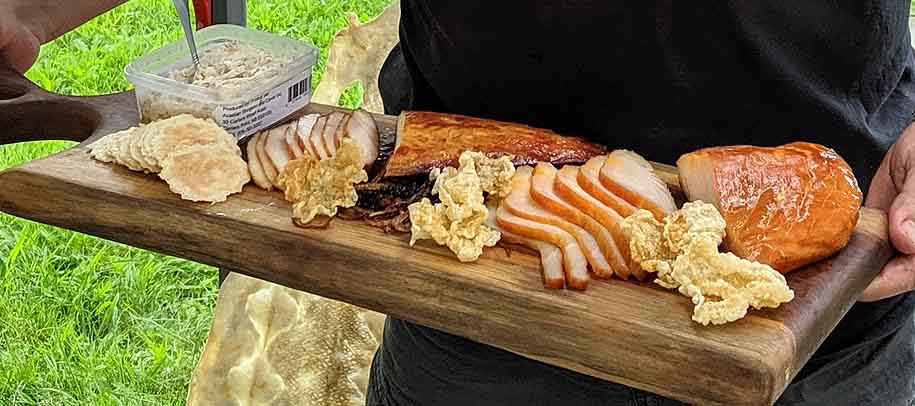
A big part of the “safari” experience is the languorous luncheon that follows the harvest expedition. Cornel Ceapa and his wife, Dorina, had everything ready to cook when we returned from the river (see previous post).

As a result, Acadian Sturgeon and Caviar sells both wild and farmed caviar. Both are inky black and low in salt, with slightly different delicate flavors. Some chefs smoke sturgeon fillets, and others roast thicker cuts. Ceapa sells both species as smoked fillets. He also sells steaks, whole sides, ground meat (perfect for pâté) and every other snippet of the fish from nose to tail fins. (Sturgeon tripe, for example, is prized in central Europe.)
Tasting begins with the two kinds of caviar
Prior to trying the charcuterie board shown at the top of the post, Cornel served us each a soft-boiled egg that had been cooked sous vide to 145°F. At that temperature, the yolk is soft and even the white is slightly runny. The idea was to provide the perfect neutral platform for tasting the “green” (i.e., farmed) caviar as well as the wild caviar.
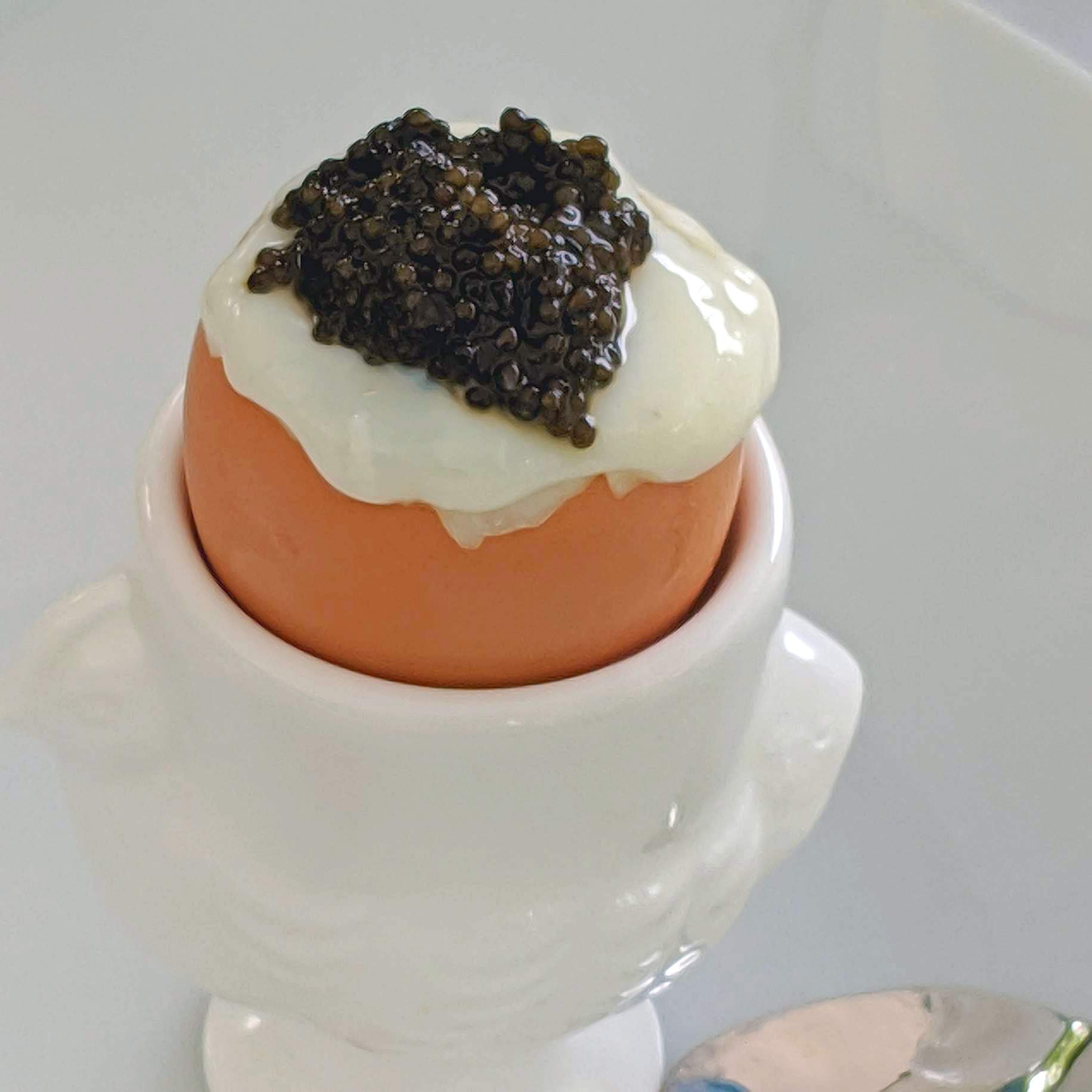
Sturgeon lends itself surprisingly well to sashimi
Ceapa chose some of the fattiest portions of sturgeon to slice paper thin and serve as sashimi. The yellow stripes in the flesh are actually the lines of fat. Since sturgeon is not an oily fish, the sashimi is very delicately flavored but surprisingly firm.
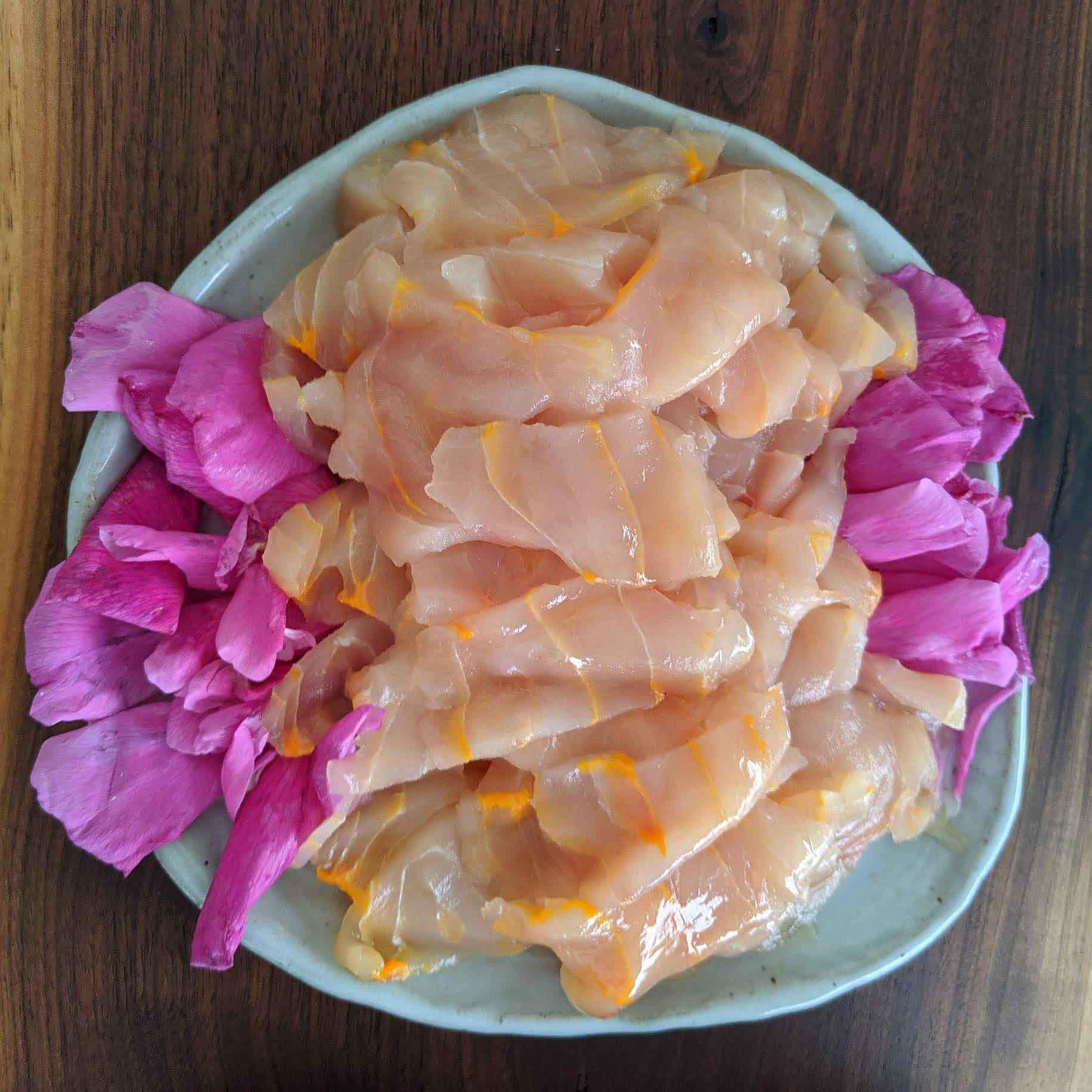
Ceviche highlights the texture of sturgeon
Before we actually began eating, Ceapa had begun the process of making ceviche. He brought out a bowl of chopped sturgeon meat with a little bit of onion and some salt and pepper. Pouring on the lime juice, he stirred well, and let it “cook” while we ate other courses. By the time we got to the ceviche, the meat had become firm with just a light crunch when you bit down. Even with the citrus, the flavor of the meat was pronounced.

Sturgeon shows versatility as base for delicate soup
As we moved into the main portion of the meal, it was time for a soup course. Cornel Ceapa calls it sturgeon bouillabaisse, but that’s a bit of stretch given that there’s only one type fish. But the sturgeon stock was delicate and a little briny and the carrot and onion gave it substance. The sturgeon itself was flaky and tasty—just firm enough to hold together in the stock. The finishing touch was a lemony touch of lovage.
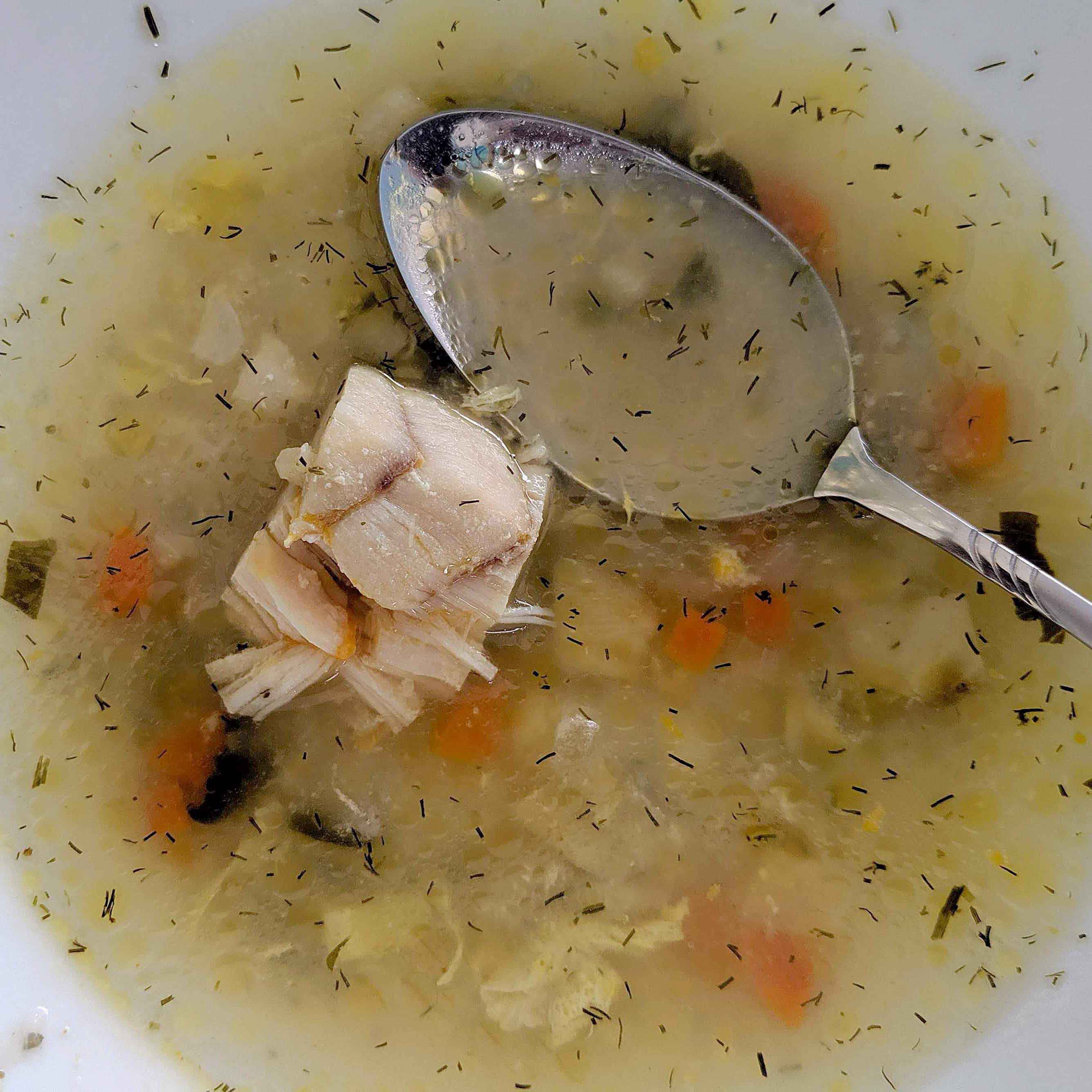
Skewers of sturgeon and peppers show fish at its meatiest
As chefs have begun to incorporate more sturgeon on their menus—thanks largely to aquaculture operations—diners have discovered that it really is the most meat-like fish available. (In the 19th century, Hudson River sturgeon was known as “Albany beef.”) Cornel Ceapa threaded his metal skewers with 2-inch blocks of sturgeon, alternating with sweet yellow peppers and mildly hot shishito peppers. He grilled them over hardwood charcoal in a ceramic egg at about 650°F until the peppers were blackened and the fish turned opaque. OMG. The combination made a delicious, smoky plate.
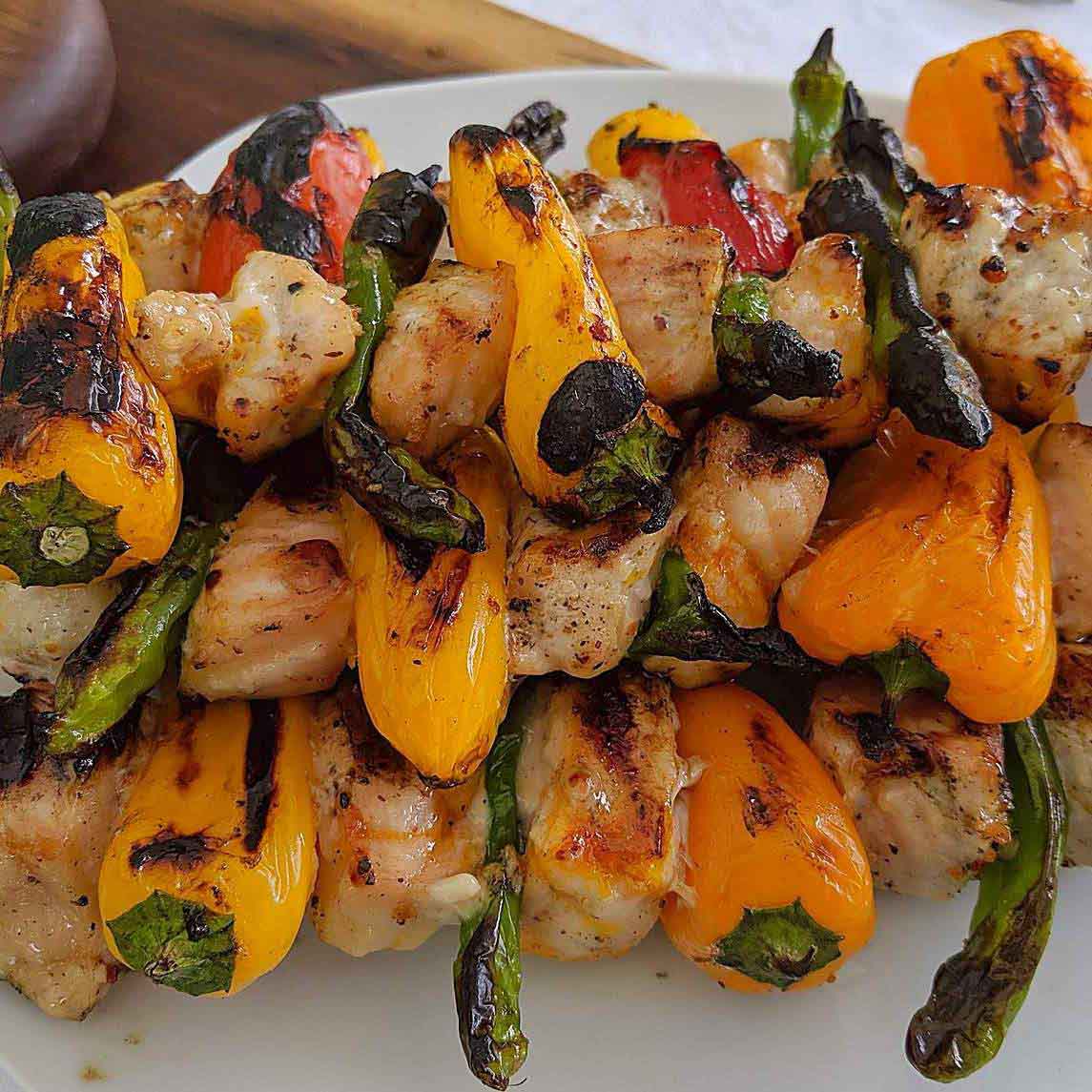
Caviar dollop on sabayon makes a fitting dessert
Although Dorina Ceapa was enjoying the meal with the rest of us, she took time out to whip up (literally) a sabayon using champagne in place of the traditional Marsala. The warm eggy custard provided a perfect foil for dollops of caviar—ending the meal much as it had begun. All in all, the sturgeon feast shows the remarkable versatility of sturgeon flesh, and proved the old adage that caviar goes with everything.

